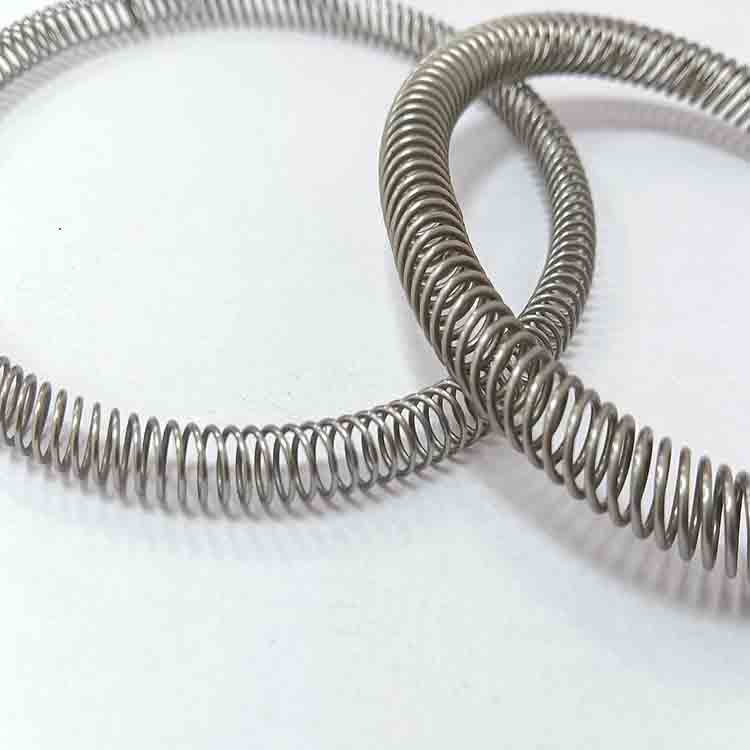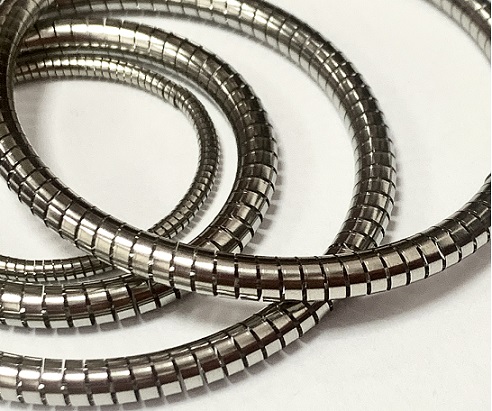When calculating the size of a spring, several parameters need to be considered. Hooke’s law describes the linear relationship between the elastic force of a spring and the amount of spring elongation.
F=k*x, F is the elastic force, k is the stiffness coefficient, and x is the length of the spring elongation
For example, to test a 5 N spring:
If a spring with a stiffness coefficient of 100 N/m is pulled with 5 N force, the spring will be stretched by 5 cm
F=k*x, k is the stiffness coefficient (unit: Newton per meter), x is the spring elongation (unit: meter), which is called Hooke’s law
For example:
When a spring is subjected to a tensile force of 10 N, its total length is 7 cm. When subjected to a tensile force of 20 N, its total length is 9 cm. Calculate the force on the original length and the elongation of 3 cm
Equation: Assuming the original length of the spring is a, then: 10=k (0.07-a) 20=k (0.09-a) k=500 N/m a=0.05 m
Because F=k*x=500 × 0.03=15 N

(1) Spring wire diameter d: indicates the diameter of the spring wire.
(2) Spring outer diameter D2: indicates the maximum outer diameter of the spring.
(3) Spring inner diameter D1: the internal diameter of the spring (that is, the diameter of the center hole of the spring).
(4) Spring pitch diameter D: middle diameter of the spring, that is, the average diameter of the spring. The correct formula is D = (D2 + D1) ÷ 2. The D = D1 + d = D2-d you gave is incorrect.
(5) Pitch t: Pitch, that is, the axial distance between the corresponding points of two adjacent rings on the middle diameter of the spring.
(6) Effective number of turns n: The number of turns the spring can maintain the same pitch.

(7) Number of support coils n2: The number of support coils is used to ensure that the spring is stressed evenly when working, and to ensure that the shaft face is vertical. Commonly used are 1.5 T, 2 T, 2.5 T, of which 2 T is commonly used.
(8) Total number of turns n1: The total number of turns, that is, the sum of the number of effective turns and the number of supporting turns. n1 = n + n2
(9) Free height H0: the height of the spring without external force. When n2 = 2, the correct formula to calculate is H0 = n*t + (N2-1)d = n*t + d (because the support ring is not usually calculated as a full pitch).
(10) Spring unfolding length L: Length of wire required to wrap the spring. For compression springs, L ≈ πD2n1 + the expansion length of the hook; For a stretch spring, L = πD2n + the expanded length of the hook.
(11) Spiral direction: Spiral direction, divided into left and right, usually use the right, unless specified in the drawing.
Note that the “T” in the above formula usually refers to the pitch “t” of the spring, but when describing the number of support turns, it may be a scale factor indicating the relationship between the number of support turns and the pitch. However, in practice, we usually give the number of support turns n2 rather than T as a unit.
In addition, for the development length L of the spring, the specific calculation formula may vary depending on the type of spring (compressed or stretched) and the specific design. The above formula provides a rough estimate, but more precise calculations may be required in practical applications.